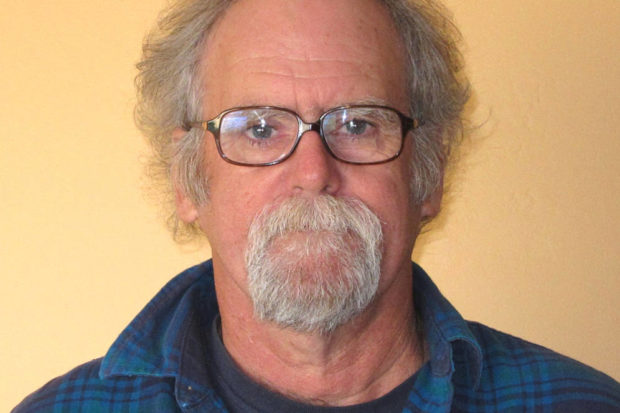
By Tom Frantz
Without a doubt, a significant portion of our pollution comes from large diesel trucks. They emit about a third of all the nitrous oxide (NOx) emissions in the Valley. The oil industry, distribution centers, sewage sludge operations, toxic waste dumps, biomass incinerators, the dairy industry and general agriculture all depend on huge numbers of trucks to do business. There are around 50,000 trucks belching diesel fumes, NOx and particulates on any given day in the Valley.
It is difficult to determine exact numbers of daily truck trips. But individual industry facts can allow good estimates. For example, there are around 3,000 tanker trucks delivering milk from dairies to processors every day. Another couple of thousand trucks daily deliver feed to these dairies and take processed milk products to market. Valley distribution centers such as Walmart and Target also account for thousands of daily trucks on our highways. During harvest time, thousands of trucks take commodities to processors and to ports for export.
A thousand trucks per day are hauling waste products into the Valley such as sewage sludge for disposal and biomass for incineration. One new project alone, Hydrogen Energy in Kern County, is proposed to need 900 truck trips per day.
It is easy to see that thousands and thousands of trucks are crisscrossing the Valley floor daily, and they are almost all related to local businesses of one kind or the other.
Our San Joaquin Valley Air Pollution Control District (Air Board) sees the matter differently. It is often heard to blame trucks passing through the Valley for a large part of our pollution problem. It has claimed repeatedly that up to 80% of the truck traffic in the Valley is not doing business here but unfairly polluting our air.
The Air Board is wrong. These statements blaming pass-through trucks for our pollution are callously meant to shift the blame away from polluting Valley businesses that the Air Board does not wish to regulate. The reality is that more than 90% of trucks in the Valley are doing business in the Valley. Most goods movement in the Valley is either between two Valley locations or it starts or ends in the Valley.
It is not difficult to estimate the number of trucks that simply pass through without stopping. The California Department of Transportation has accurate numbers on highway truck traffic. The only trucks that do not stop to do business here are some of the trucks on Interstate 5. Any truck traveling from Los Angeles to the Bay Area is not going to take Highway 99 even though there are up to 15,000 trucks per day on stretches through major cities.
The total number of trucks on I-5 varies throughout the length of the Valley. The numbers often change dramatically at certain intersections. In the Stockton area, there can be up to 25,000 trucks on short stretches of I-5. In Kern County, there are areas where the number is barely 7,000 such as near Buttonwillow. This smaller number represents the maximum number of trucks that could possibly be passing through the Valley between the state’s major urban areas.
Of course, not all of these 7,000 trucks are just passing through. Quite a few of them are related to local agriculture such as those servicing the giant Boswell tomato plant on Highway 58 or the busy Frito-Lay plant next door. The west-side oil industry also sends hundreds of trucks daily onto the freeway in this area. The hazardous waste dump in Buttonwillow often receives a hundred trucks per day off of I-5. Sewage sludge trucks pass through also on their way to various destinations in Kern and Kings counties.
The reality is that about half of the trucks on I-5 are doing business somewhere in the Valley. The trucks on Highway 99 are nearly all doing business in the Valley. The thousands of daily trucks that seldom get on major highways also seriously pollute our air as they serve local businesses. The only logical conclusion, based on available information and common sense, is that no more than 5%–10% of total trucking in the Valley is nonstop through traffic. That is a far cry from the story told by the Air District and its Board members as they pass the buck on improving our air quality and health.
*****
Longtime clean air advocate Tom Frantz is a retired math teacher and Kern County almond farmer. A founding member of the Central Valley Air Quality Coalition, he serves on the CVAQ steering committee and as president of the Association of Irritated Residents. CVAQ is a partnership of more than 70 community, medical, public health, environmental and environmental justice organizations representing thousands of residents in the San Joaquin Valley unified in their commitment to improve the health of Californians. For more information, visit www.calcleanair.org.
